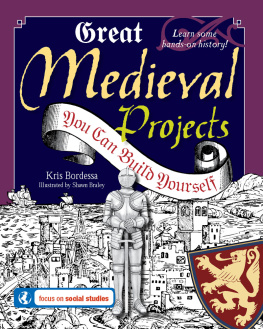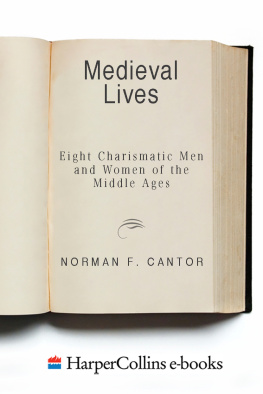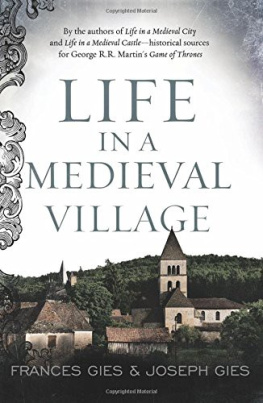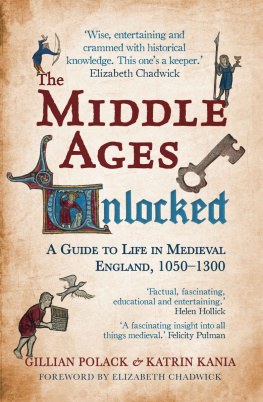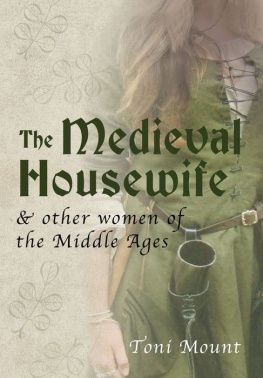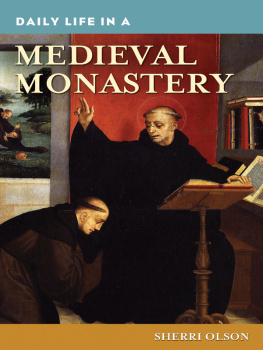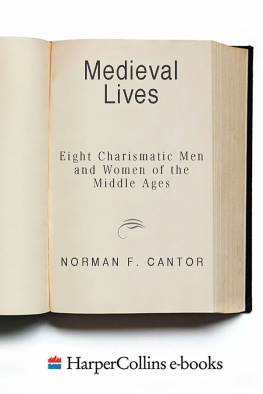Nomad Press
A division of Nomad Communications
10 9 8 7 6 5 4 3 2 1
Copyright 2008 by Nomad Press
All rights reserved.
No part of this book may be reproduced in any form without permission in writing from the publisher, except by a reviewer who may quote brief passages in a review.
The trademark Nomad Press and the Nomad Press logo are trademarks of Nomad Communications, Inc. Printed in the United States.
ISBN: 978-0-9792268-0-9
Illustrations by Shawn Braley
Questions regarding the ordering of this book should be addressed to
Independent Publishers Group
814 N. Franklin St.
Chicago, IL 60610
www.ipgbook.com
Nomad Press
2456 Christian St.
White River Junction, VT 05001

Nomad Press is committed to preserving ancient forests and natural resources. We elected to print Great Medieval Projects on 4,315 lb. of Rolland Enviro100 Print instead of virgin fibres paper. This reduces an ecological footprint of:
Tree(s): 37
Solid waste: 1,057kg
Water: 100,004L
Suspended particles in the water: 6.7kg
Air emissions: 2,321kg
Natural gas: 151m3
Its the equivalent of:
Tree(s): 0.8 american football field(s)
Water: a shower of 4.6 day(s)
Air emissions: emissions of 0.5 car(s) per year
Nomad Press made this paper choice because our printer, Transcontinental, is a member of Green Press Initiative, a nonprofit program dedicated to supporting authors, publishers, and suppliers in their efforts to reduce their use of fiber obtained from endangered forests.
For more information, visit www.greenpressinitiative.org

Other titles from Nomad Press

Contents

Introduction
G ood morrow, my lord and my lady! Have you ever wondered what it would be like to live in a castle? Or to don a suit of armor and head out to battle on your trusty steed?

This book will help you discover what life was like in medieval Europe. When we think of that time, we often think of King Arthur and his Knights of the Round Table, Merlin the magician, or fire-breathing dragons. While some of this is real history, the Middle Ages is full of myth and legend, and finding out what really happened can be a difficult task!
So what was medieval Europe like? It was a time when feudal lords and kings ruled the land, and castles dotted the European countryside. It was also a chaotic time, as these rulers battled for control of land, culture, and religion.
But many of the people who lived during the Middle Ages were poor peasants or tradesmen. They never set foot inside a castles grand hall. Instead, they lived in small thatched huts in villages owned by a feudal lord. Protective walls surrounded the villages, and even entire cities, because of the constant threat of war.

During this time, Christianity spread throughout Western Europe. Before the rise of Christianity, the people of Europe worshipped many gods instead of one. During the Middle Ages, kings and queens forced people to abandon these old beliefs and become Christians. Ultimately, the Christian church became very powerful. It controlled the entire political and legal system of Europe.
This book will show you how people lived, ate, and entertained themselves during the Middle Ages. Youll meet some real life medieval characters. And you will create projects that will help you learn about life in a medieval village, town, and castle.

Most of the activities in this book can be made by kids with minimal adult supervision. The supplies are either common household items or easily available at craft stores. So get ready to step back in time to medieval Europe and Build it Yourself!

medieval Europe: Europe during the Middle Ages, a period of time from about 350 to 1450 CE.
myth: a traditional story dealing with ancestors or heroes, or even supernatural figures.
legend: an ancient story that may or may not have really happened.
feudal lord: a member of feudal society who owned the land and had power over others.
feudal society: the social system that developed in Europe between the ninth and fifteenth centuries.
Kings and barons provided land to vassals in exchange for their loyalty.
peasant: a farmer in feudal society who lived on and farmed land owned by his lord.
tradesmen: a skilled worker, such as a stonecutter or tailor.
The Making of
Medieval Europe
T he medieval era, roughly during the years 3501450, is also known as the Middle Ages. This is because the era came between the fall of the Roman Empire and the period known as the Renaissance.

The people of the Renaissance were the first ones to use the term Middle Ages. They saw this period as a low point in history. Even though the term Middle Ages was originally meant to be unkind, historians still use it today.

Of course, the inhabitants of the Middle Ages didnt see themselves as between anything. They feltjust as we do todaythat the current times were as modern as they could be.
During the early Middle Ages, Europe included the islands of Britain and Ireland, along with much of the land that we now call Italy, Germany, and France. To the north were the Vikings, people who lived in the lands we now call Denmark, Norway, Sweden, and Finland. This group of countries is called Scandinavia. To the south, across the Mediterranean Sea, was Africa. The northern part of Africa was populated by Moors, who were Muslim. To the east was the Byzantine Empire, which included modern-day Turkey and parts of Greece, Bulgaria, and the islands of Sicily and Sardinia. Further to the east was Asia, home of the Arabians and the Huns. The people of these lands often battled with each other.

Next page
